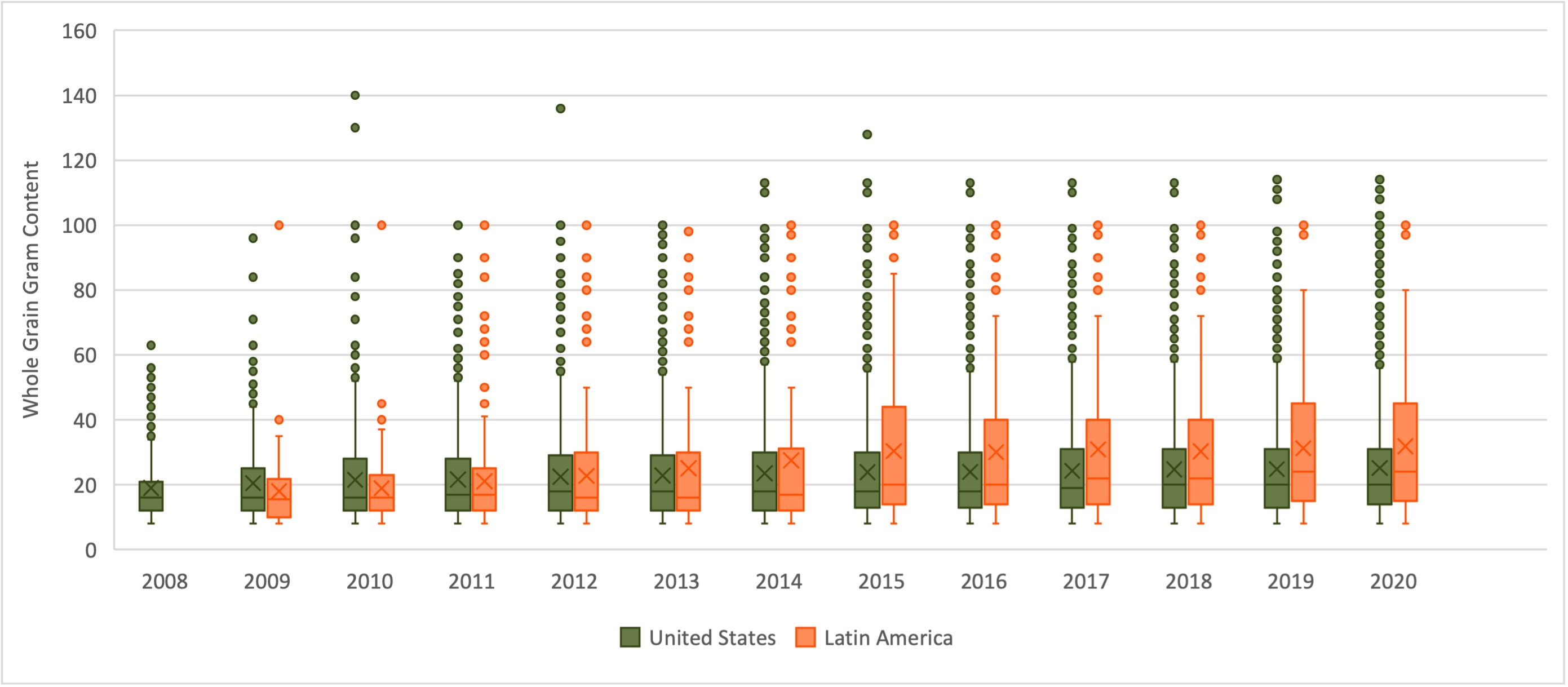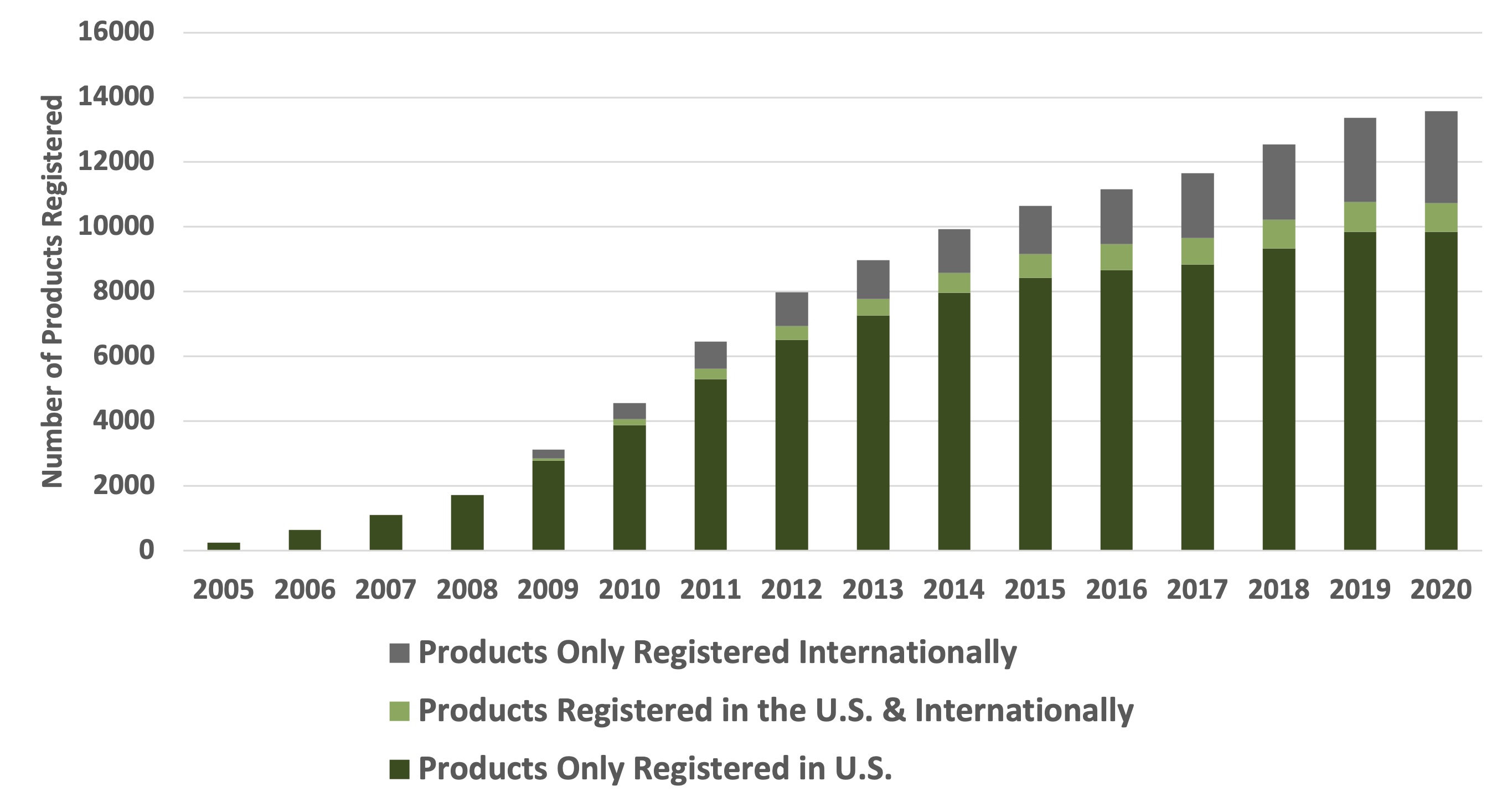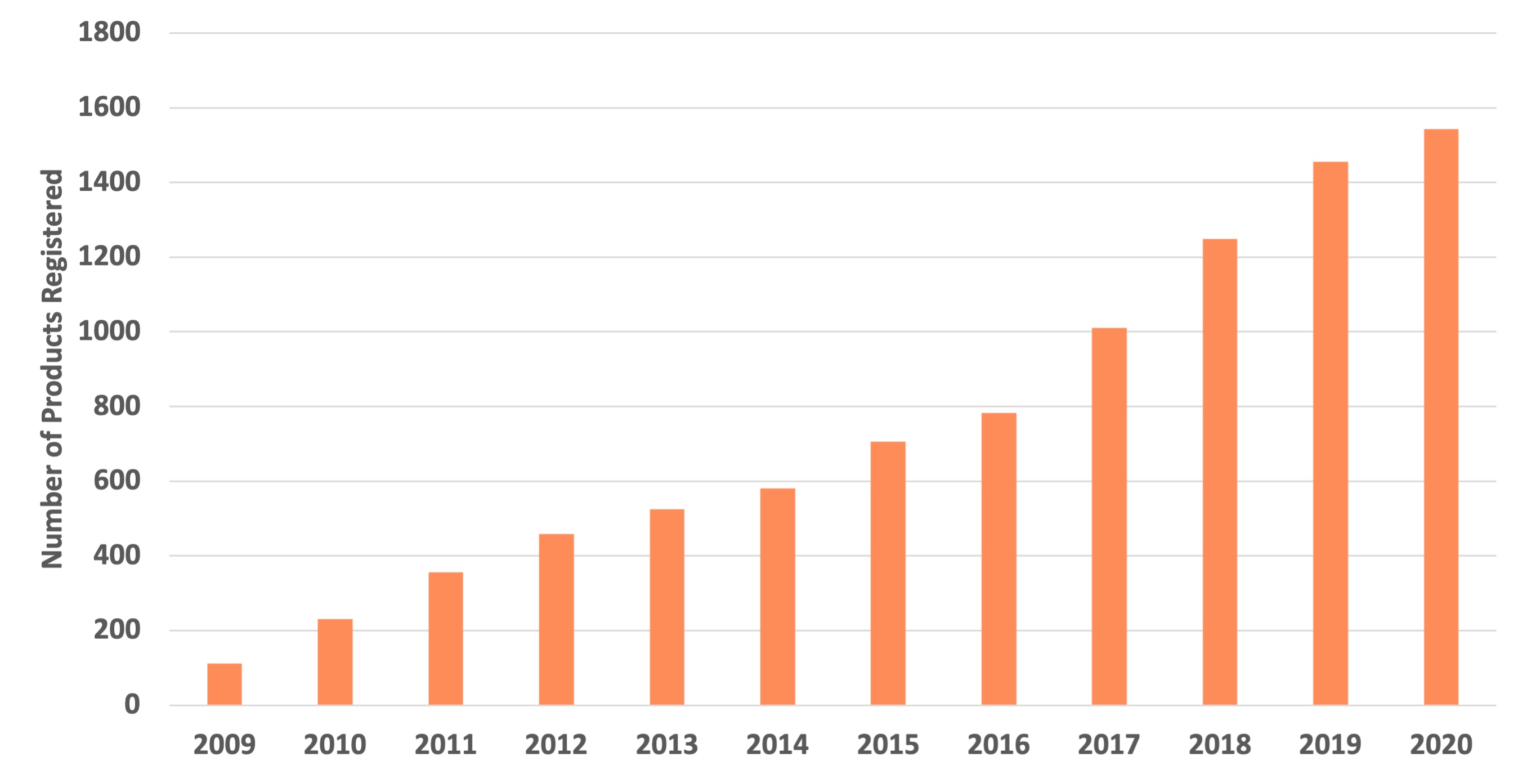Share This
If it seems like there are more whole grain options available in the grocery store aisles today than ever before, that’s because it’s true! New research conducted by the Whole Grains Council team and published last week in Nutrients demonstrates just how much progress there has been in making whole grain options more accessible. Not only has there been a huge swell in the number of products using the Whole Grain Stamp, but the average whole grain content of Stamped products has risen significantly from 2007 to 2020. These findings suggest that manufacturers are using higher quantities of whole grain in their products as well as developing a more diverse array of whole grain options for consumers – great news for those of us looking to meet the recommendation of getting at least 48g of whole grain per day.
Four Key Findings
#1: The whole grain content of products is increasing.
Researchers found that for products registered in the US, the average whole-grain gram amount shown on the Whole Grain Stamp has risen from 19 grams to 25.1 grams between 2008 and 2020. Growth in the whole grain content of Latin American products was even more pronounced, growing from 18.1 grams per serving in 2009 to 31.9 grams per serving in 2020 – a 76% increase! This means that companies that use the Whole Grain Stamp are increasing the amount of whole grain in their formulations and introducing new products that feature whole grain ingredients more prominently than products made in the past.
#2: Whole Grain Stamp use continues to grow.
In 2005, the year the Whole Grain Stamp was introduced, just 250 products used the Stamp in the US, but by the end of 2020, more than 10,700 American products used the Stamp. Similarly, more Latin American products are using the Stamp now than ever before, with more than 500 new whole grain products registered for Stamp use between 2017-2020. While the Whole Grain Stamp program is voluntary for manufacturers, the Whole Grains Council’s database captures a huge volume of whole grain products on the market, offering valuable insights into trends changes over time.
#3: Ancient grains and sprouted grains are on the rise.
The Whole Grains Council team found that there are five ancient grains – amaranth, millet, quinoa, sorghum, and teff – that have held steady or shown growth in prevalence between 2010 and 2020. Quinoa has had the most dramatic journey toward fame. In 2010, quinoa was used in under 3% of Stamped products, but by 2020 it showed up in 10.5% of products – a 3.5-fold increase. Sorghum may not be enjoying the same level of stardom yet, but it’s gone from being included in just 0.6% of products in 2010, to appearing in 4.4% of Stamped products by 2020, which represents an impressive 7.4-fold increase. Sprouted grains have also made quite a splash in recent years. The number of Stamped products using sprouted grains rose from 100 in 2013, to 400 in 2017. Since then, numbers have leveled off, but remain steady.
#4: Cold cereals, breads, and snacks & crackers are the most common Whole Grain Stamped product categories.
This aligns very closely with national survey data indicating that the most common sources of whole grains in the American diet are breads, rolls & tortillas, cold cereals, and savory snacks & crackers. The product categories where whole grains seem to be underutilized included baking mixes, pizza & pizza crusts, and waffles, pancakes & French toast. These are categories with ample room for future innovation from food companies looking to diversify their whole grain offerings.
The health benefits of whole grains are well-demonstrated and their role as an important part of a healthy diet is widely understood and recognized in both US and global dietary guidelines. The Whole Grains Council research team believes the findings of this research point toward important progress made in the last decade to increase the availability of whole grain foods, allowing consumers to find, purchase, and consume more whole grain products. We look forward to being a part of continued progress toward better public health outcomes in the coming decade. (Caroline)




Comments
Add a Comment